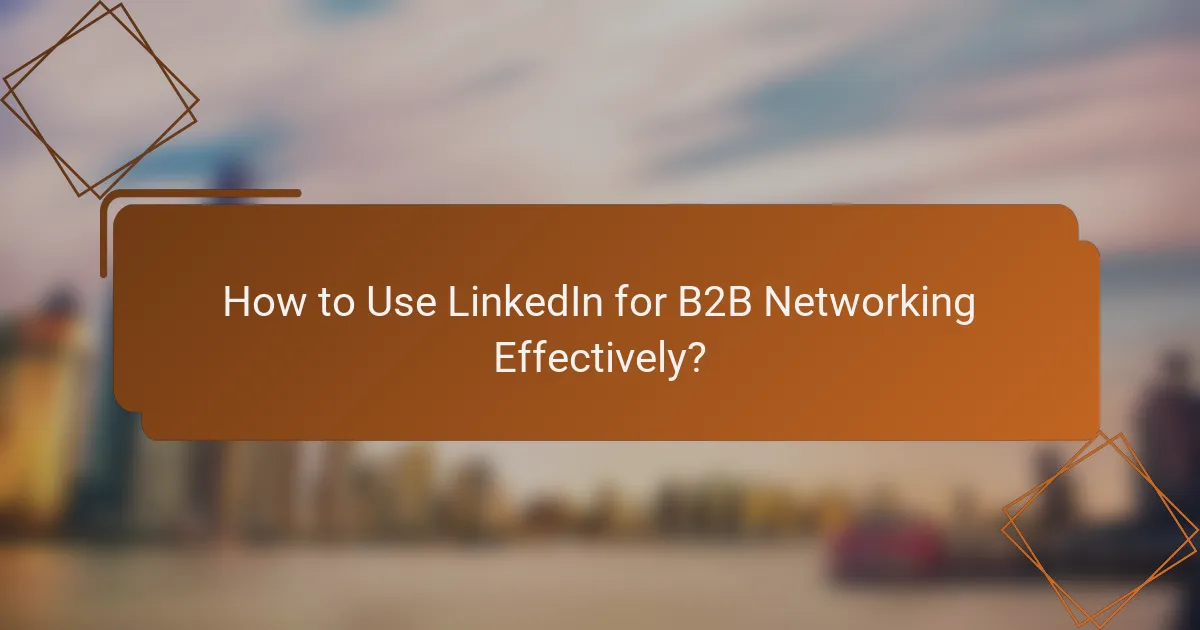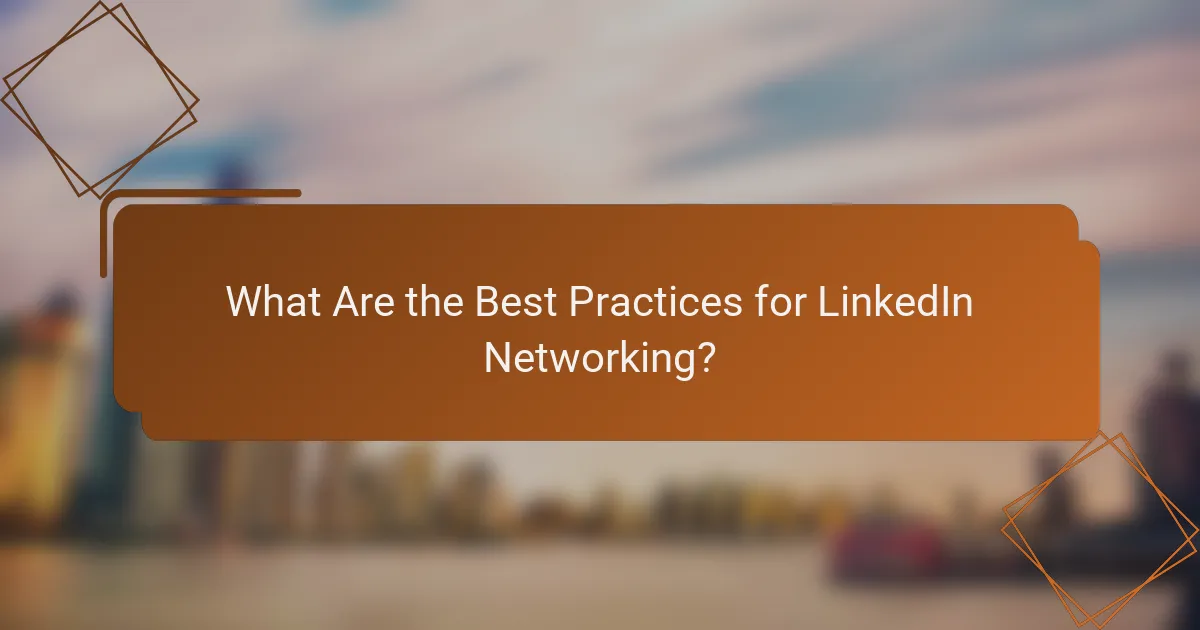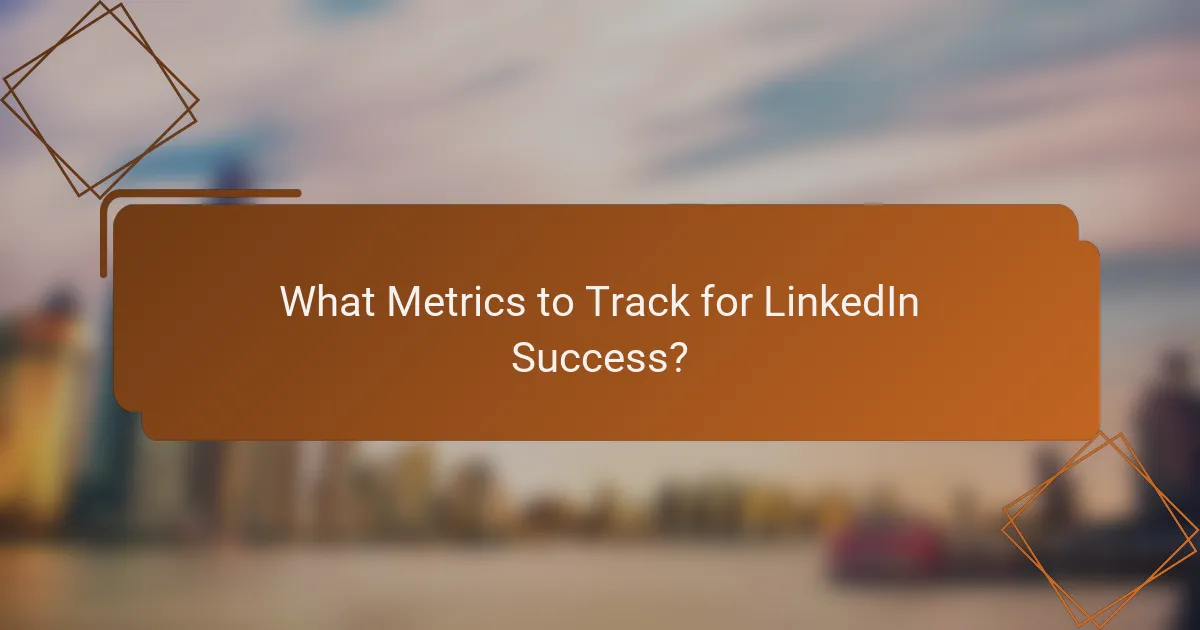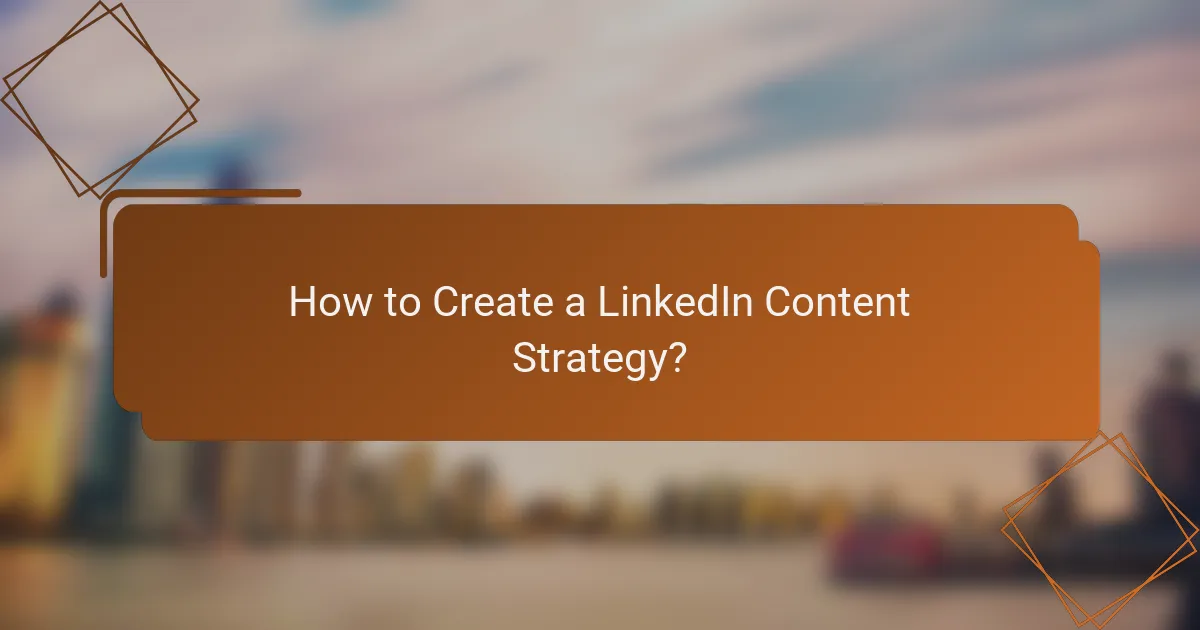LinkedIn is a powerful platform for B2B networking, enabling professionals to build meaningful connections and enhance their visibility within their industry. By optimizing your profile, personalizing connection requests, and actively engaging in discussions, you can create valuable relationships that lead to new opportunities. Focus on quality connections and share relevant content to establish your credibility and influence in your field.

How to Use LinkedIn for B2B Networking Effectively?
Using LinkedIn for B2B networking involves strategically building connections and engaging with industry professionals. Focus on optimizing your profile, actively participating in discussions, and utilizing LinkedIn’s features to enhance your visibility and credibility.
Optimize your profile
Your LinkedIn profile is your digital business card and should reflect your professional brand. Ensure your profile picture is professional, your headline clearly states your role, and your summary highlights your expertise and achievements.
Include relevant keywords in your profile to improve searchability. Aim for a complete profile with endorsements and recommendations to establish credibility. Regularly update your information to reflect your current skills and accomplishments.
Engage with industry content
Engaging with industry content helps you stay informed and positions you as a thought leader. Share articles, comment on posts, and write your own insights to foster discussions within your network.
Use LinkedIn’s content suggestions to find trending topics in your industry. Aim to post regularly, ideally a few times a week, to maintain visibility and engagement with your connections.
Join relevant groups
Joining LinkedIn groups related to your industry allows you to connect with like-minded professionals and potential clients. Participate in discussions and share valuable insights to build your reputation within these communities.
Look for groups with active discussions and a significant number of members. Aim to contribute meaningfully rather than just promoting your services, as this builds trust and rapport.
Utilize LinkedIn messaging
LinkedIn messaging is a powerful tool for direct communication. Use it to reach out to potential clients or partners with personalized messages that reference mutual connections or shared interests.
Keep your messages concise and focused on how you can provide value. Avoid generic pitches; instead, aim for a conversational tone that encourages dialogue and relationship building.
Leverage LinkedIn events
LinkedIn events offer opportunities to network and learn from industry leaders. Attend webinars, workshops, or conferences to connect with other professionals and expand your network.
When hosting an event, promote it through your network and relevant groups. Follow up with attendees afterward to nurture relationships and explore potential collaborations.

What Are the Best Practices for LinkedIn Networking?
Effective LinkedIn networking involves strategic actions that enhance relationships and opportunities. Key practices include personalizing connection requests, following up with new contacts, and sharing valuable content that resonates with your audience.
Personalize connection requests
When sending connection requests on LinkedIn, always personalize your message. A brief note explaining why you want to connect can significantly increase acceptance rates. Mention mutual connections or shared interests to make your request more relevant.
A well-crafted connection request can lead to meaningful conversations. Aim for a friendly tone and keep it concise, ideally under 300 characters. Avoid generic messages, as they may come across as insincere.
Follow up with new connections
After connecting, it’s essential to follow up with a message. This could be a simple thank you or an invitation to discuss common interests further. Following up shows that you value the connection and are interested in building a professional relationship.
Consider scheduling a brief call or meeting if the connection seems promising. A follow-up within a week of connecting is ideal, as it keeps the interaction fresh and demonstrates your proactive approach.
Share valuable content
Sharing relevant and insightful content on LinkedIn is crucial for establishing your expertise and engaging your network. Aim to post articles, industry news, or personal insights that resonate with your audience’s interests.
Consistency is key; aim to share content at least once a week. Use visuals and engaging headlines to attract attention. Additionally, encourage discussions by asking questions or inviting feedback on your posts.

How to Build a Strong LinkedIn Network?
Building a strong LinkedIn network involves strategically connecting with individuals who can enhance your professional opportunities and influence. Focus on quality over quantity by targeting relevant connections, engaging actively, and leveraging recommendations to strengthen your profile.
Identify target connections
Start by defining your networking goals and identifying the types of professionals who can help you achieve them. This may include industry leaders, potential clients, or peers in your field. Use LinkedIn’s search filters to find individuals based on location, industry, and job title.
Consider joining relevant LinkedIn groups where your target connections are active. Engaging in discussions within these groups can help you identify key players and establish initial rapport before sending connection requests.
Engage with existing connections
Regularly interact with your current connections to maintain and strengthen relationships. This can be done by liking, commenting on, or sharing their posts, which keeps you on their radar. Personalized messages or follow-ups can also enhance your engagement.
Consider hosting or participating in webinars and discussions that are relevant to your network. This not only showcases your expertise but also encourages existing connections to engage with you and each other, fostering a more vibrant network.
Utilize recommendations
Recommendations on LinkedIn serve as powerful endorsements of your skills and expertise. Request recommendations from colleagues, clients, or mentors who can speak to your professional capabilities. Aim for a diverse range of recommendations that highlight different aspects of your work.
In addition to requesting recommendations, take the time to give them as well. Writing thoughtful recommendations for others can encourage reciprocity and strengthen your professional relationships, making your network more robust.

What Metrics to Track for LinkedIn Success?
To measure LinkedIn success, focus on metrics that reflect your networking effectiveness, engagement, and lead generation. Key metrics include connection growth rate, engagement levels, and lead generation effectiveness, which provide insights into your overall performance on the platform.
Connection growth rate
The connection growth rate indicates how quickly you are expanding your network on LinkedIn. A healthy growth rate typically ranges from 5% to 15% monthly, depending on your activity and outreach strategies.
To improve your connection growth rate, regularly send personalized connection requests to industry professionals, engage with their content, and participate in relevant groups. Avoid sending generic requests, as they may lead to lower acceptance rates.
Engagement levels
Engagement levels measure how actively your connections interact with your content. This includes likes, comments, shares, and overall post reach. Aim for an engagement rate of around 2% to 5% for your posts to ensure your content resonates with your audience.
To boost engagement, share valuable insights, ask questions, and use visuals to capture attention. Monitor which types of posts generate the most interaction and adjust your content strategy accordingly.
Lead generation effectiveness
Lead generation effectiveness assesses how well your LinkedIn activities convert into potential business opportunities. Track the number of leads generated through direct messages, connection requests, and content engagement. A conversion rate of 10% to 20% from interactions to leads is generally considered effective.
To enhance lead generation, create targeted content that addresses the pain points of your audience, utilize LinkedIn’s advanced search features to identify prospects, and follow up promptly with interested connections. Avoid aggressive sales tactics, as they can deter potential leads.

How to Create a LinkedIn Content Strategy?
Creating a LinkedIn content strategy involves planning and executing content that resonates with your target audience while achieving your business goals. A well-defined strategy helps in establishing your brand presence, engaging with prospects, and driving conversions.
Define your audience
Identifying your audience is crucial for a successful LinkedIn content strategy. Start by analyzing your current customers and prospects to understand their demographics, interests, and pain points. Consider creating buyer personas to visualize your target segments.
Utilize LinkedIn’s analytics tools to gather insights about your followers and their engagement patterns. This data can help refine your content to better meet their needs and preferences.
Choose content formats
Selecting the right content formats is essential for engaging your audience effectively. Consider using a mix of articles, infographics, videos, and polls to cater to different preferences. For instance, short videos can capture attention quickly, while in-depth articles can provide valuable insights.
Experiment with various formats to see which ones yield the best engagement rates. Keep in mind that LinkedIn favors native content, so prioritize formats that are directly uploaded to the platform over external links.
Schedule regular posts
Consistency is key when it comes to posting on LinkedIn. Aim to publish content regularly, whether it’s daily, weekly, or bi-weekly, to maintain visibility and engagement. A content calendar can help you plan and organize your posts effectively.
Analyze the best times to post based on your audience’s activity. Generally, mid-week mornings tend to see higher engagement rates. Avoid posting too frequently, as this can overwhelm your audience and lead to decreased interaction.
